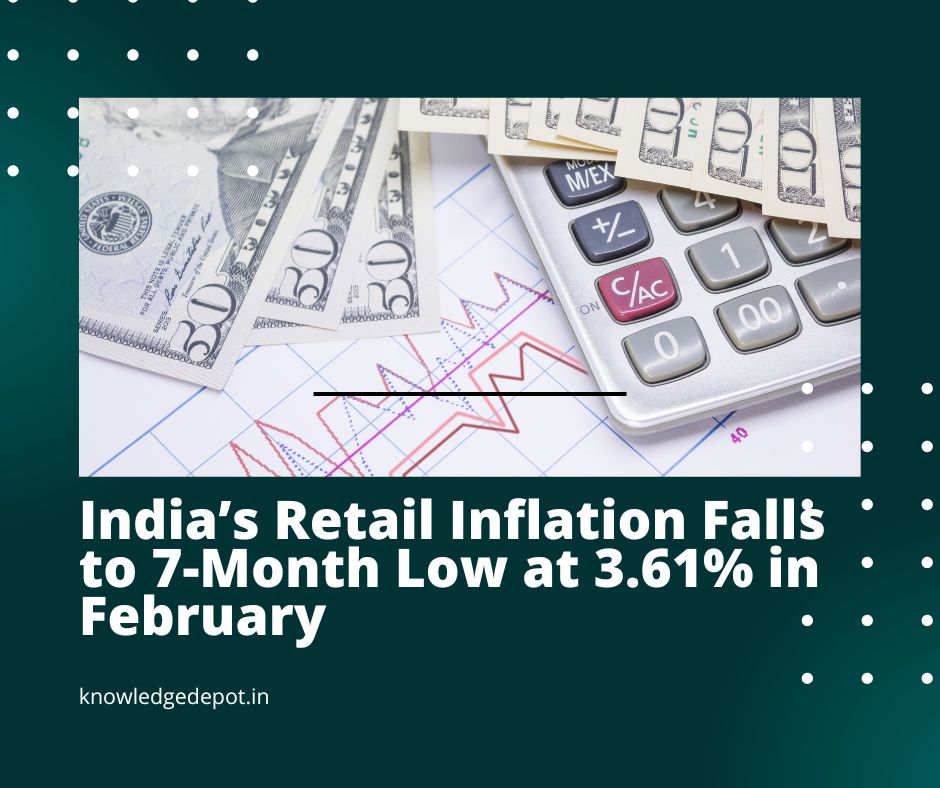India’s retail inflation has experienced a notable decline, reaching a seven-month low of 3.61% in February 2025, down from 4.31% in January. This decrease brings inflation below the Reserve Bank of India’s (RBI) medium-term target of 4% for the first time since August 2024.
Factors Contributing to the Decline
The primary driver behind this reduction is the significant easing of food price pressures. Food inflation dropped to 3.75% in February from 5.97% in January, influenced by lower prices in vegetables, eggs, meat, fish, pulses, and dairy products. Notably, vegetable prices fell by 1.07% year-on-year, contrasting with an 11.35% increase in January.
Urban and Rural Inflation Trends
Both urban and rural areas witnessed a decline in inflation rates. Rural inflation decreased to 3.79% in February from 4.59% in January, while urban inflation fell to 3.32% from 3.87%. Food inflation in rural areas stood at 4.06%, and in urban areas, it was 3.20%.
Implications for Monetary Policy
The decline in retail inflation below the RBI’s target range of 2-6% may prompt the central bank to consider further interest rate cuts to stimulate economic growth. The RBI has already reduced the policy repo rate by 25 basis points in its previous monetary policy review. Economists anticipate that the current inflation trend could lead to additional rate cuts in the upcoming policy meetings.
Industrial Output and Economic Outlook
Alongside the decline in inflation, India’s industrial output growth improved to 5% year-on-year in January 2025, up from 3.2% in December 2024. This uptick in industrial activity, coupled with easing inflation, paints a positive picture for the country’s economic outlook, potentially leading to increased consumer spending and investment.
Global Economic Context
The U.S. Federal Reserve’s recent decision to maintain interest rates, amidst concerns over tariffs and their impact on inflation and growth, has influenced global financial markets. This decision, along with India’s favorable inflation data, has contributed to the strengthening of the Indian rupee and stability in government bonds.
Conclusion
The significant decline in India’s retail inflation to a seven-month low is a positive development for the economy, offering potential for monetary policy easing and sustained economic growth. Continued monitoring of inflation trends and proactive policy measures will be crucial in maintaining this momentum.



